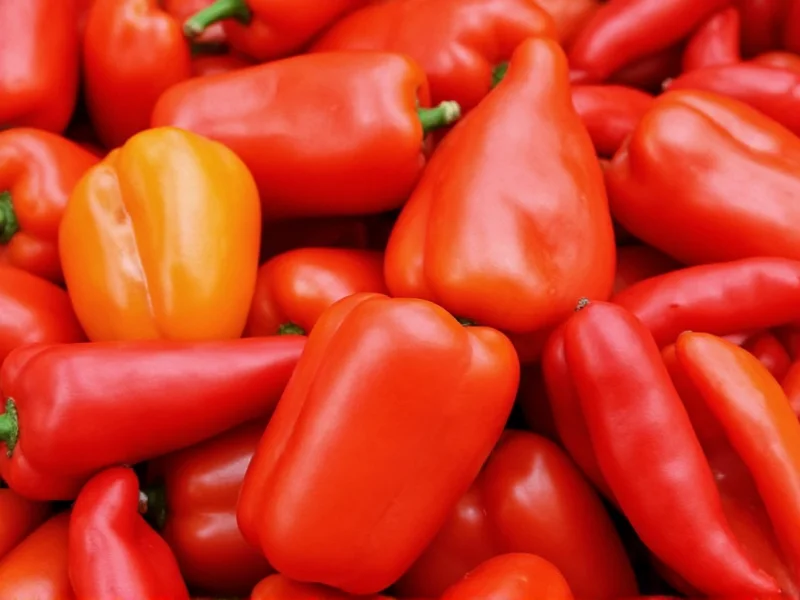Understanding the precise nutritional value of common vegetables helps make informed dietary choices. Bell peppers, available in various colors including green, red, yellow, and orange, offer not only vibrant flavors but also impressive nutritional benefits with minimal caloric impact. This comprehensive guide breaks down the exact calorie content and nutritional profile of bell peppers to help you incorporate them effectively into your meal planning.
Nutritional Profile of Bell Peppers by Color
Bell peppers undergo natural changes as they ripen, which affects their nutritional composition. Green bell peppers are actually unripe versions of what will become red, yellow, or orange peppers. As they mature on the vine, their sugar content increases slightly while their chlorophyll decreases, resulting in subtle differences in calorie counts and nutrient profiles.
| Bell Pepper Color | Size (grams) | Calories | Carbohydrates (g) | Vitamin C (%DV) |
|---|---|---|---|---|
| Green (medium) | 119g | 24 | 6 | 134% |
| Red (medium) | 119g | 31 | 7.5 | 213% |
| Yellow/Orange (medium) | 119g | 32 | 7.7 | 190% |
| Green (1 cup, chopped) | 150g | 30 | 7.5 | 169% |
Why Bell Peppers Are Nutrition Powerhouses
Beyond their low calorie count, bell peppers deliver exceptional nutritional value. A single medium red bell pepper provides more than double your daily recommended vitamin C intake. They're also rich in vitamin A, potassium, folate, and various antioxidants that support eye health and immune function.
The minimal calorie content of bell peppers makes them ideal for volume eating strategies. You can consume a substantial portion without significantly impacting your daily calorie budget. For example, three cups of chopped green bell peppers contain only about 90 calories but provide nearly 500% of your daily vitamin C needs.
Practical Applications for Healthy Eating
Understanding calories in 1 bell pepper helps with practical meal planning. Here's how to maximize their nutritional benefits:
- Raw consumption: Enjoy bell peppers raw in salads or with hummus to preserve maximum vitamin C content, which can degrade with cooking
- Cooking considerations: Light cooking methods like stir-frying maintain most nutrients while enhancing the absorption of fat-soluble vitamins
- Meal prep: Incorporate chopped bell peppers into omelets, grain bowls, or as a colorful topping for tacos
- Portion awareness: While low in calories, be mindful that stuffed bell peppers with high-calorie fillings can significantly increase the overall calorie count
Comparing Bell Peppers to Other Common Vegetables
When evaluating calories in vegetables, bell peppers rank among the lowest-calorie options. A medium bell pepper contains fewer calories than a medium carrot (32 calories) or a medium tomato (22 calories, but much smaller in size). Compared to starchy vegetables like potatoes (163 calories for medium), bell peppers offer significantly more volume for fewer calories.
This makes bell peppers particularly valuable for those following calorie-restricted diets or seeking nutrient-dense food options. Their high water content (approximately 92%) contributes to their low energy density while providing satisfying volume.
Addressing Common Misconceptions
Some people mistakenly believe that all colorful vegetables are high in sugar and therefore higher in calories. While it's true that riper red and yellow bell peppers contain slightly more natural sugars (and thus slightly more calories) than green peppers, the difference remains minimal in practical terms. The additional nutrients in riper peppers, particularly higher levels of antioxidants like beta-carotene, often outweigh the negligible calorie difference.
Another common question is whether cooking affects the calorie content of bell peppers. The cooking process doesn't significantly alter the calorie count of bell peppers, though it may concentrate sugars slightly through water loss. However, cooking methods that add fats or oils will increase the overall calorie content of your dish.
Nutritional Benefits Beyond Calories
When considering calories in 1 bell pepper, it's important to look beyond just energy content. Bell peppers offer several health benefits that make them valuable additions to any diet:
- Vitamin C powerhouse: Especially red bell peppers contain more vitamin C than citrus fruits, supporting immune function and skin health
- Antioxidant variety: Different colored peppers provide various antioxidants that combat oxidative stress
- Dietary fiber: A medium bell pepper provides about 2.5 grams of fiber, supporting digestive health
- Low glycemic impact: With only 6 grams of carbohydrates, bell peppers have minimal effect on blood sugar levels
Practical Tips for Incorporating Bell Peppers
Maximize the nutritional benefits of bell peppers with these practical suggestions:
- Store whole bell peppers in the crisper drawer of your refrigerator for up to two weeks
- Wash peppers just before use to maintain freshness
- Combine different colored peppers in one dish for maximum nutrient variety
- Pair with healthy fats like olive oil or avocado to enhance absorption of fat-soluble vitamins
- Use bell peppers as low-calorie substitutes for higher-calorie ingredients in recipes
Understanding Serving Sizes for Accurate Tracking
When tracking calories in bell peppers, be precise with your measurements. Many people underestimate portion sizes, which can affect calorie counting accuracy. A medium bell pepper is typically 3-3.5 inches in diameter and 3.5-4 inches tall. If you're using kitchen scales, aim for approximately 119 grams for a standard medium pepper.
For meal preppers and those following specific dietary plans, knowing the exact calories in raw bell pepper versus cooked is valuable. Cooking doesn't significantly change the calorie content per gram, but it does reduce volume through water loss, meaning a cup of cooked peppers will contain slightly more calories than a cup of raw peppers due to the concentration effect.











 浙公网安备
33010002000092号
浙公网安备
33010002000092号 浙B2-20120091-4
浙B2-20120091-4